The new generation stepping up at Australia’s family-run wineries
Not all family-owned wineries can look forward to a continuing legacy, with more and more adult children of established winemakers choosing to walk away from the family business. And who can blame them? Here are the exceptions.
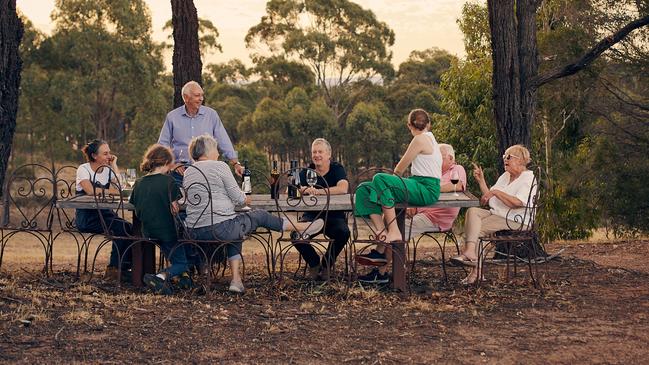
It’s the last weekend of August, and in the hills of Heathcote in central Victoria, Jasper Hill is holding its annual release celebration. Cars clog the red dirt driveway and crowds cram inside the cottage-like cellar door to get their hands on new vintages from one of Australia’s most acclaimed boutique labels. As 14-year-old Ella McNally punches sales into an EFTPOS machine, her 11-year-old brother Nate hands out a winery quiz he wrote the night before.
Q: Who were Jasper Hill’s original founders? Answer: Nate and Ella’s grandparents, Ron and Elva Laughton.
Q: What year was our first vintage? Answer: 1982.
Q: Who are the vineyards named after? Answer: Nate and Ella’s mother, Emily, and their aunty Georgia.
Q: How often do we water our vineyards? Answer: Never.
The “never” part was Ron’s idea from day one. The food scientist turned self-taught wine whisperer figured that by stressing the vines they’d produce small grapes with intense concentration of flavour and colour. His simple philosophy: let the terroir do the talking. Or as Ron puts it, “Get as much flavour of the vineyard as you possibly can into the wine, without stuffing it up.”
When Ron and Elva drove past a “For sale” sign on their way home from a cow cocky’s dinner dance in 1978, Heathcote as a wine region didn’t exist. Ron put it on the map, popularising the unmistakable style of shiraz the region soon became famous for: dark and inky, earthy and rich, born of fruit grown in a slender vein of ancient red Cambrian soil.

The Laughtons lived initially in a shed beside the vineyard, then a caravan, before upgrading to a tiny, subterranean cellar Ron and Elva blasted into the bedrock with explosives and a jackhammer. The cellar had precisely enough room for a double bed, two single beds and a pot-belly stove. “We literally lived in a hole in the ground,” says Emily McNally, leading The Weekend Australian Magazine down a dark staircase into said hole in the ground. “Didn’t have an inside toilet for 16 years, no electricity apart from solar panels. Milk came from Matilda the goat. The thought of tepid milk still makes me wretch.”
From this cellar – now lined with dusty bottles of the winery’s most venerable vintages – slowly rose a handsome mudbrick home, fashioned from the same soil that nurtured the vines. Nothing came for free. “The girls knew that if you wanted your own bedroom, you better start making some bricks,” says Elva.
Ron and Elva, now in their late seventies, still live in the house, but the job of not stuffing things up in the vineyard has been taken up by Emily, who since 2015 has led the winemaking, ably assisted by her husband Nick. But this is no simple story of family succession, because it rarely is. Emily never intended to work in the family business. She trained as a teacher, but returned home unexpectedly after personal upheaval in 2001. “I didn’t come back because I wanted to make wine,” she says. “I came back because I needed family around me.”
But her family also needed her. It’s a harsh reality that without the next generation stepping up, a family business can’t survive. Ron says it’s been a joy teaching Emily everything he knows (“she’s now a better winemaker than me!”) while Elva reckons it’s nice to be able to wake up and look across the vineyard without thinking about all the jobs that need doing. “We built this house,” she says. “The last thing we ever want to do is leave.”
Emily says that apart from the time they nearly lost the vineyard to drought and all the other times it felt like they didn’t know what they were doing, it’s been a charmed ride. “I didn’t realise how much I loved making wine until I started doing it. I can’t imagine doing anything else now.”
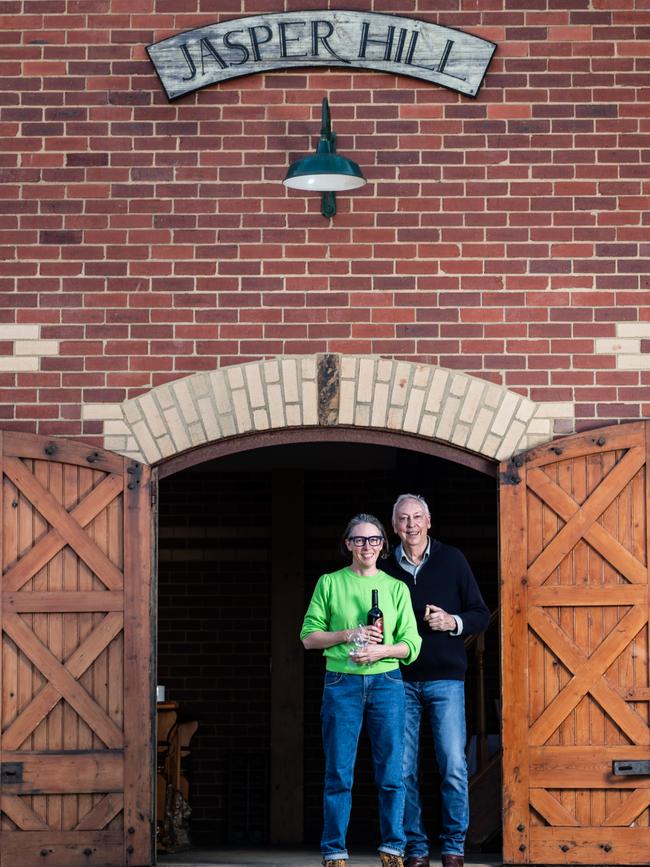
But not all family-owned wineries can look forward to a continuing legacy, with more and more adult children of established winemakers choosing to walk away from the family business, leaving mum and dad with little option but to sell up. And who can blame them? Earlier in the year, Australia’s First Families of Wine, a group representing a dozen of Australia’s oldest family-owned wineries, declared the Australian wine industry to be in crisis. The facts are, for want of a better word, sobering. Globally, per capita wine consumption is down a quarter from what it was 20 years ago. In Australia, red wine stocks sit at more than double the annual sales forecast. The export market has flatlined and cost-of-living pressures have curtailed domestic consumption. Add to that inflation, high interest rates, rising operating costs and climate woes, and it’s little wonder the new generation are reluctant to take over.
“It’s a unique time in Australia’s wine history,” says wine industry real estate agent Nick Butler. “Many pioneering luminaries of the ’80s and ’90s are confronting succession issues at the same time.” Butler says the new generation is often put off after seeing first-hand how hard their parents have had to work. “Making great wine takes passion, focus and meticulous attention to detail. While most vignerons hope their passion is generationally contagious, it can often work the other way.”
THE WEEKEND AUSTRALIAN MAGAZINE: THE DRINKS ISSUE
Nick Ryan’s 20 best white wines of the year (over $30)
Nick Ryan’s 20 best red wines of the year (over $35)
Best value Australian white wines
Australia’s best value red wines revealed
Nick’s picks of the best sparkling - from home and abroad
That’s the spirit! The year’s best gins, rums, mezcals and more
Wine industry lawyer Will Taylor, from Adelaide firm Finlaysons, has been working with family-owned wineries on succession planning for over a decade. He agrees the issue is reaching a crux. “There’s certainly been an uptick in distressed sales, but I don’t think it’s necessarily because the kids are saying they don’t want it, it’s more that they’ve come to a realisation that the business is not viable. Or sometimes the reason for selling is because the kids are dysfunctional – they could never run the business.”
But a little dysfunction isn’t always a bad thing. Dinner table deliberations were de rigueur in the De Bortoli household in the 1950s, as a teenage Deen butted heads with his Italian immigrant father Vittorio, trying to convince him to expand their burgeoning winery beyond its base in Bilbul, in the NSW Riverina. The headstrong Deen won out, and the winery his father founded in 1928 has grown to become one of Australia’s largest, with vineyards in the Yarra Valley, King Valley, Heathcote, Hunter Valley and Rutherglen, to go with the original block at Bilbul. Deen in turn handed the reins to his four children, with daughter Leanne De Bortoli now heading up the company’s Yarra Valley operation with her winemaker husband Steve Webber. Family succussion is more or less built into the De Bortoli business model, and a key part of their success. And that shows no sign of stopping.
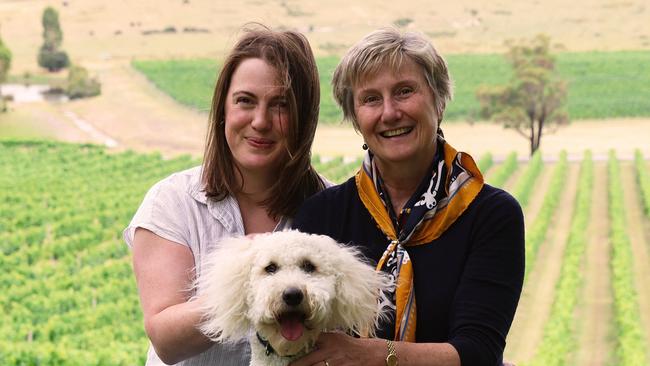
Leanne and Steve’s daughter Kate Webber is the eldest of 13 “fourth genners”, as Leanne calls them, and the first to start a full-time role in the business, making wine alongside her dad. But she never saw wine as part of her future. “I wasn’t interested at all when I was young,” she says. “Mum and dad would offer us a glass at dinner and my sister and I would say, ‘Why are you trying to poison us with that stuff?’” She can pinpoint the moment her altitude softened. “I was working in the south of France as a nanny, and my parents came to visit. We were sitting under a tree, the sun was shining, and we opened a bottle of rosé. It was my first real experience enjoying a glass of wine with mum and dad.”
Kate is currently engrossed in projects to ensure the business will still be thriving for generations to come, such as selecting clones to suit a warming climate, trying to predict what people will want to drink 20 years from now, and working out how to protect their vineyards from the scourge of grape phylloxera, an insect pest that spells the death of every grapevine it infects.
Leanne says the challenges Kate’s generation are confronting are far greater than anything she and her siblings faced when they took over from their parents. “It was a time of growth and great opportunity back then. We all had energy and ideas, all fitted into different roles. But the landscape is completely different now.”
Another difference is that the family bloodline is growing. Leanne says it was important that the 13 “fourth genners” understood that a job at De Bortoli wasn’t a birthright. “We made it clear to them from a young age that there were certain conditions, that they couldn’t just expect to walk into a pay cheque at the company,” she says. “One condition was they would need to get a degree. Another was to gain experience working somewhere else. Managing those expectations is what we’re navigating right now – sorting out those lines of communication.”

So far only Kate and her cousin Sophie (a trainee winemaker at the family’s Rutherglen winery) have joined the business, but younger cousins are coming through. “I think it’s pretty amazing what the family has achieved in the past 96 years,” says Kate. “We might fight sometimes, but to be working with your family and making wine with your dad is pretty special.”
The changing of the generational guard can be a golden opportunity to change the trajectory of a business. Hayley Purbrick reckons one benefit of being the daughter of an acclaimed winemaker is that you can champion a cause without fear of being shown the door. Tahbilk Estate in Nagambie has been in the Purbrick family since 1925, making it Victoria’s oldest family-owned winery. Hayley’s father, Alister Purbrick, has recently eased into semi-retirement after 45 years at the helm.
After working for Ernst & Young during the early days of carbon accounting, fifth-generation Hayley came back to Tahbilk in 2008 as a strong-willed twentysomething determined to overhaul its environmental and sustainability credentials. She organised the business’s first emissions audit, using the data to develop a plan for reducing their carbon footprint. “We worked across a whole heap of elements,” says Hayley, “including land management, biodiversity, solar energy, revegetation, right through to package design, minimising waste and even using heat-reflective paint.”
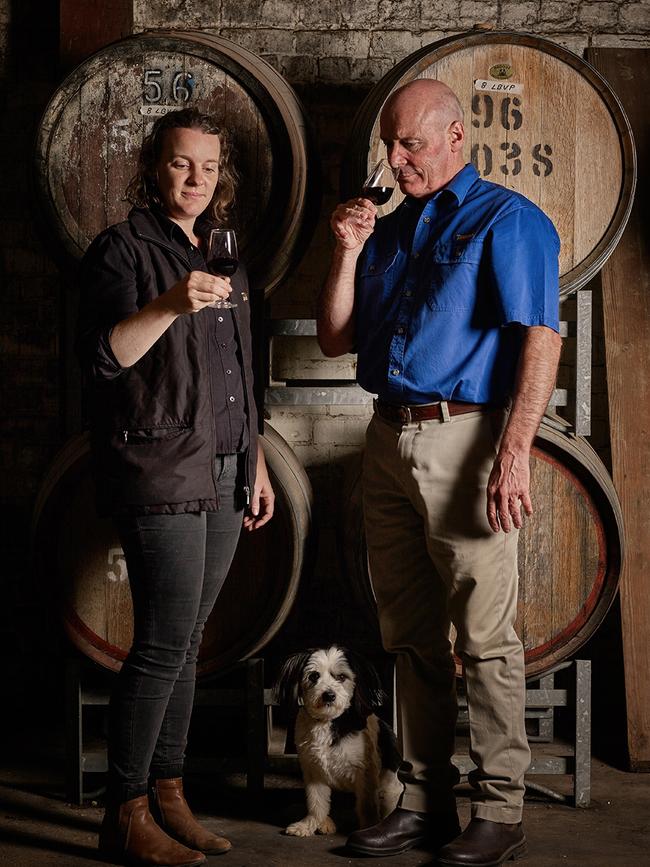
In five years Hayley took the business to net zero, partially through purchasing carbon credits (“it’s actually a great way of motivating you to reduce emissions,” she says), and in 2022 Tahbilk was accredited fully carbon neutral, meaning it sequesters as much carbon as it emits. “We’re at where everyone else wants to be in 2050,” she says.
Hayley doubts her father would have granted an outsider the same latitude to drive such radical reform. “This was the cause that I was passionate about. Did the business see it that way? Absolutely not. Did dad come on board eventually? Yes, he did. And ultimately I think that’s the benefit of family. If it was someone else, the idea would have been tossed out in the early days, 100 per cent.”
It’s possible that Alister Purbrick recognised a little of himself in his daughter, for he too was once a young upstart with grand ideas. When he joined the firm in 1978 as the family’s first formally trained winemaker, things at Tahbilk weren’t looking too flash. A series of poor seasons resulted in a cellar full of poor quality reds. In order to clear the cellar and salvage the winery’s reputation for fine red wine, he created a sub-brand to sell the inferior product at a reduced price. He then had to somehow convince his father John and grandfather Eric (winemaker at the time) to spend $300,000 they didn’t have on a state-of-the-art facility for making white wine. The faith placed in the 24-year-old’s judgment was soon validated, with Tahbilk’s 1979 vintages of semillon and riesling winning gold medals at the Brisbane and Perth wine shows.
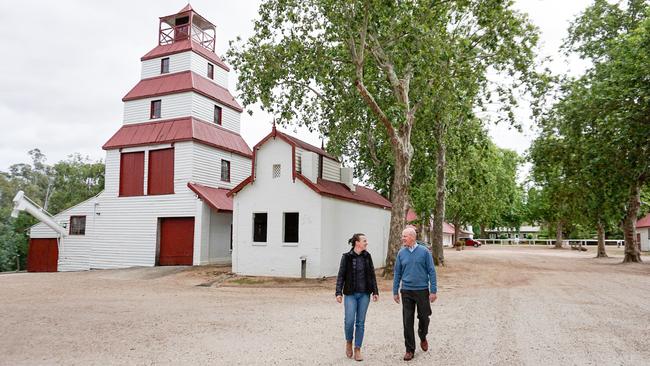
“Eric let dad redefine our white wine making,” says Hayley. “He recognised that this was dad’s space, the area where he could really innovate within the business. And he had the courage to trust him.” By leveraging the myriad strengths of multi-generational families, Hayley thinks the Australian wine industry can have a bright future. “Young people bring energy and optimism, while the older generation brings wisdom. When they come together, it’s incredibly powerful. That’s the magic of succession. And that’s what will get you through a crisis.”



To join the conversation, please log in. Don't have an account? Register
Join the conversation, you are commenting as Logout